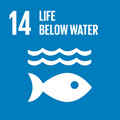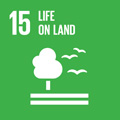- Docente: Massimo Ponti
- Credits: 6
- SSD: BIO/07
- Language: Italian
- Moduli: Massimo Ponti (Modulo 1) Eva Turicchia (Modulo 2)
- Teaching Mode: In-person learning (entirely or partially) (Modulo 1); In-person learning (entirely or partially) (Modulo 2)
- Campus: Ravenna
- Corso: Second cycle degree programme (LM) in Marine Biology (cod. 8857)
-
from Jan 29, 2025 to May 08, 2025
-
from Feb 06, 2025 to May 07, 2025
Learning outcomes
At the end of the course, the student learns the theoretical and practical methods for the study of the marine environment by SCUBA diving. The student learns the methods and techniques for studying the morphological and ecological characteristics of the seabed; for the analysis of marine communities and their dynamics; for the experimental study and analysis of ecological hypotheses in the field. During the exercises at sea, the student applies the different study methods.
Course contents
Scientific diving, evolution, prerogatives and limits of underwater research. Safety in scientific diving: physiological and cognitive limits in carrying out scientific work in diving, risk analysis, regulations and standard procedures. Methods and techniques for the study of the topographic and bionomic characteristics of the seabed. Qualitative and quantitative descriptive methods for the characterization of benthic populations and ichthyofauna. The use of scientific instruments and the use of photographic and video systems. Application of experimental methods in the field: setting up of the research campaign and analysis of ecological hypotheses in immersion. Through the exercises at sea, students experience the applicability of different methods for the analysis of ecological problems.
The course, including the planned dives, is part of the training for scientific diving approved by the Italian Association of Scientific Divers (AIOSS) in order to meet the minimum level of competence required by the standards for European Scientific Diver, defined by the European Scientific Diving Panel (ESDP).
Readings/Bibliography
Colantoni P. 2007 L'immersione scientifica. Tecniche di indagine subacquea. Editrice La Mandragora, Imola, 144 pp.
Gambi M.C., Doppiano M. (Eds.) 2003 Manuale di metodologia di campionamento e studio del benthos marino mediterraneo. Biologia Marina Mediterranea 10 (s): 638 pp.
Other suggested readings
Bakus G.J. 2007 Quantitative analysis of marine biological communities. John Wiley & Sons, Hoboken, New Jersey, 435 pp.
Barbieri F. 2014 Cavità sommerse. L'immersione in caverne e grotte marine. Editrice La Mandragora, Imola, 208 pp.
Boyer M. 2014 La fotografia naturalistica subacquea. Tra tecnica, arte e scienza. Magenes Editoriale srl, Milano, 239 pp.
Heine J.N. 2011. Scientific Diving Techniques. A pratical guide for the research diver. Best Publishing Company, Flagstaff, Arizona (USA), II Eds, 232 pp.
Teaching methods
The course includes frontal teaching, computer and pool exercises, seminars with the collaboration of external teachers, guided tour of the Ravenna Hyperbaric Center, dives at sea.
The computer exercises include the planning of scientific dives, the graphic rendering of topographic and bionomic surveys, the analysis of video footage and photographic samples. The exercises in the pool allow the learning of working procedures and the use of instruments. The activity at sea involves the application and comparison of the different techniques in real conditions.
The carrying out of the practical exercises at sea, scheduled for the month of May, is supported by the Flaminia Foundation, the organization supporting the University in Ravenna and Romagna.
Minimum requirements for participation in swimming pool and sea exercises:
- possession of a first level sports diving license (enabling at 20 m depth with scuba) for the swimming pool, second level (enabling at 30 m depth with scuba diving) for training in the sea, issued by any recognized underwater didactics internationally,
- possession of a medical certificate of fitness for diving issued by a doctor specialized in diving and / or hyperbaric medicine,
- possession of their own personal diving equipment (minimum 5 mm wetsuit, gloves, boots, fins, weight belt, adequate weight, mask, snorkel, regulator, BC and dive computer),
- the completion of at least 20 dives regularly recorded on their log book to be delivered at least one month before the exercises in the sea.
In consideration of the types of activities and teaching methods adopted, the attendance of this training activity requires all students to complete the e-learning modules 1 and 2, and to participate to module 3 on specific training on safety and health in the places of study. Information on dates and methods of attendance of module 3 are reported in the specific section of the degree program website.
Assessment methods
The final exam aims to evaluate the degree of learning of the methods and the ability to apply them during exercises in the pool and in the sea.
Knowledge will be assessed through a written test and an oral exam relating to the topics covered during lectures, classroom exercises and the practice carried out in the pool and in the sea.
During the examc, students will also be able to discuss one of the scientific articles relating to underwater research provided as didactic material.
The final grade of the Course consists in the synthesis of the assessments of the various components of the activities.
The dates of the exams will be published on the almaesami website. Students can book for the exams exclusively using the methods provided by the online almaesami system.
Teaching tools
The teaching material (power point, some articles) will be made available on the university's e-learning platform.
During the underwater exercises in the pool and in the sea, cylinders refilled with air (or nitrox) and the instruments for underwater research will be used (e.g. tablet for underwater surveys, metric cords, sorbon, squares, digital cameras, video cameras, etc.).
Although it is always desirable to use personal diving equipment, the supply of BCDs and regulators to those without one will be evaluated.
Students who need compensatory tools for reasons related to disabilities or specific learning disorders (SLD) can directly contact the Service for Students with Disabilities (disabilita@unibo.it) and the Service for Students with learning disabilities (dsa@unibo.it) to agree on the adoption of the most appropriate measures.
Links to further information
Office hours
See the website of Massimo Ponti
See the website of Eva Turicchia
SDGs



This teaching activity contributes to the achievement of the Sustainable Development Goals of the UN 2030 Agenda.
